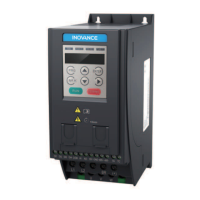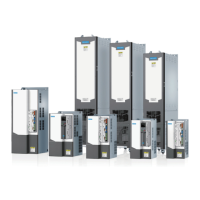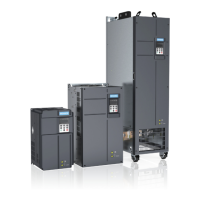Function Application
‑642‑
Para. Name De
fault
Value Range
Description
B1‑18
Friction force
compensation
curve
0
0: Running
frequency
1: Linear speed
2: Multi‑friction
compensation
curve 1
3: Multi‑friction
compensation
curve 2
Five friction compensation modes
are available to meet the
requirements of complex friction
changes.
0: Running frequency
In some scenarios, the friction
changes with the system running
frequency. When B1‑18 is set to 0,
the friction compensation value is
determined using the following
formula:
Friction compensation torque = B1‑
07 x (1 + Frequency converted
based on the linear speed/
Maximum frequency x B1‑17)
Contin
ued
Continued
Contin
ued
Continued 1: Linear speed
This mode is similar to mode 0. The
friction compensation is based on
the linear speed and the friction
compensation value is determined
using the following formula:
Friction compensation torque = B1‑
07 x (1 + Linear speed/Maximum
linear speed x B1‑17)
2: Multi‑friction compensation
curve 1
In some scenarios, the friction does
not change linearly with the
running frequency. Based on the
frequency converted from the
linear speed, the dynamic friction
compensation value can be
obtained through the multi‑friction
compensation curve mode. For
details, see B1‑19 to B1‑24.
3: Multi‑friction compensation
curve 2
Compared with compensation
curve 1, compensation curve 2 is
more flexible but requires more
parameters to be set. For details,
see B1‑19 to B1‑30 in "
Figure 3–79
DI torque boost function
"
on page
649
.

